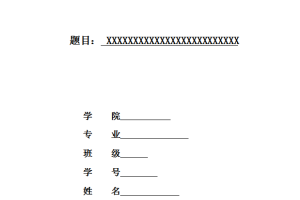调和与对比在儿童服装店中的体现与应用
摘 要:
在店铺的商品陈列与装修设计方面,要充分借用调和与对比的原理。调和与对比是一种艺术哲学。具体而言,可以在色彩方面与造型方面进行调和与对比的处理。色彩方面,包括主体色彩的调和处理与对比处理,非主体色彩的调和处理与对比处理,儿童服装色彩的调和处理与对比处理。在造型方面进行调和与对比处理的方法,要依据不同造型对应不同心理感受的规律,结合实际情况,精心选择具有不同造型特点、不同表征的器物或家具,使儿童服装店具有调和与对比高度统一的造型审美感。从而有力地促进店铺的销售。
关键词:调和,对比,儿童服装,色彩,造型
Abstract:
Shop sells children’s clothing, have a larger market space and easy to reach trade advantage. In the shop’s commodity display and decoration design, to be an artistic treatment. Should make full use of the principle of harmony and contrast. In contrast, a good understanding of. However, the ” harmony” meaning is more abundant. ” Harmony” is a word, there are two kinds of meaning: a refers to the differential, contrast, and even contrary to, in order to make it become a harmonious whole and adjust, collocation and combination process; another mean different things together present and a harmonious,, order, structured, organized, efficient and varied unified state ( or unity in diversity ). Harmony and contrast is a philosophy of art. Specifically, can be in color and modeling aspects of harmony and contrast processing. The aspect of color, including a body color harmony and contrast, subjective color harmony and contrast processing, children’s clothing color harmony and contrast processing. In the modeling aspects of harmony and contrast processing method, according to the different shapes corresponding to different psychological feeling rules, combined with the actual situation, carefully selected with different shape features, different characterization of the objects or furniture, making children’s clothing store with harmony and contrast of highly uniform aesthetic sense. To effectively promote the store ‘s sales.
Key words:Harmonic; contrast; children’s clothing; color; modeling
目 录
中文摘要…………………………………………………………Ⅰ
外文摘要…………………………………………………………Ⅱ
绪论………………………………………………………………1
一儿童服装店设计调和与对比原理……………………………………………1
(一)形状的调和与对比
(二)色彩的调和与对比
(三)材质的调和与对比
二、儿童服装店设计的特点和现状……………………………7
(一)儿童服装店的特点
(二)儿童服装店的现状及缺陷
三、案例分析……………………………………………………9
结论………………………………………………………………10
参考文献…………………………………………………………11
致谢………………………………………………………………12





